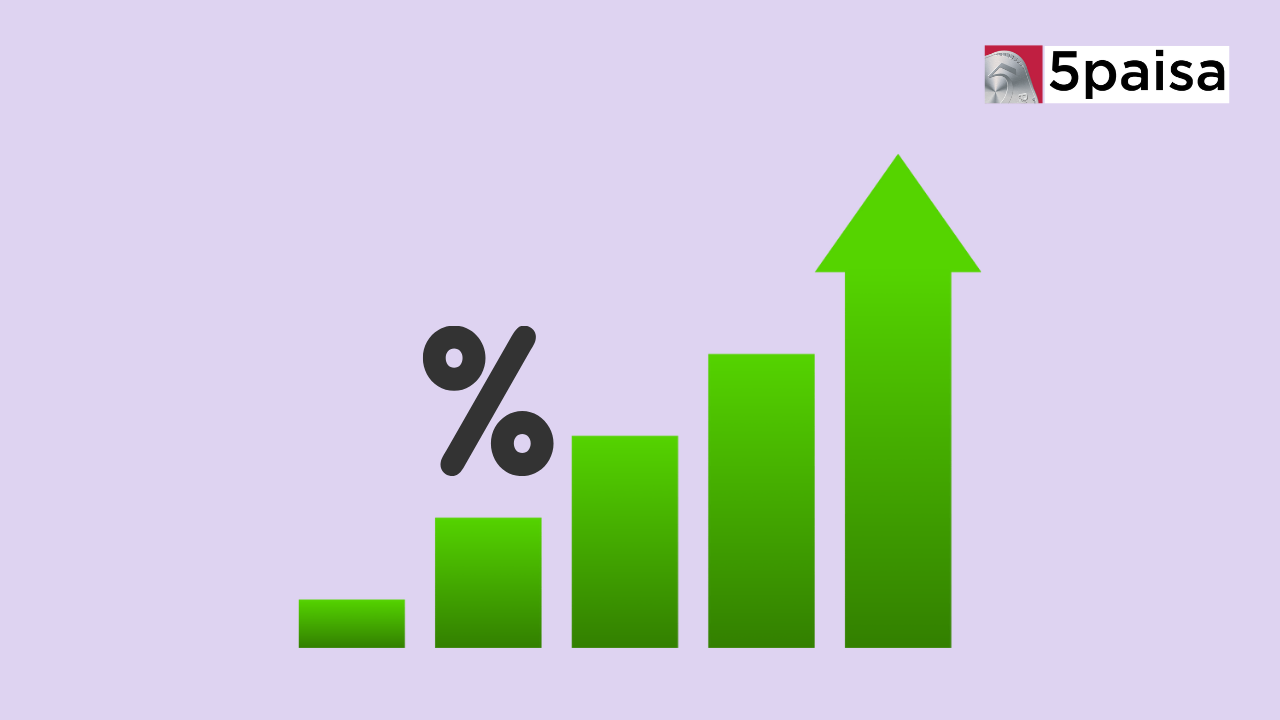Top Energy ETFs in India - Best Funds to Invest
5 Multi-bagger stocks for the next 5-years

Last Updated: 7th September 2023 - 05:09 pm
Nifty50 and Sensex have doubled from March 2020 lows. The rally in the market was supported by huge global liquidity and coordinated efforts by countries across the globe to fight the coronavirus (Covid-19) pandemic. The successful introduction of covid19 vaccine, growth-oriented proposals in the budget across various sectors of the economy improved investor sentiments. Additionally, healthy corporate results also supported market performance.
Some of the investors may think to liquidate their portfolio to take the advantage of rise in the markets. However, investors can consider to add quality stocks in their portfolio to earn superior returns in the long run.
Thus, based on the positive outlook, future growth prospects, and management pedigree of the companies, we have selected the below 5 stocks that could be likely multi-baggers over the period of next 5-years.
SBI Life Insurance (SBILI)
SBI Life (SBILI) is our top pick for 2021. While SBILI marginally underperformed peers last year due to higher impact from pandemic-led lockdowns, we expect it to deliver strong growth in 2021, as its distribution channel comes back full force and the product mix stabilises with rise in share of protection. We believe SBILI will deliver top-quartile growth helped by a favourable base, backed by well-diversified distribution, rational cost structure, and an under-penetrated mass customer base. The stock is trading at discount to HDFCLI, despite offering similar growth. We forecast VNB Cagr of 18.3% over FY20-22E. The stock trades at 2.8x FY21E P/EV.
| Year | New Premuim Income (Rs Cr) | VNB (Rs Cr) | VNB margin (%) | PAT (Rs Cr) | EV per share | P/EV (x) |
| FY20 | 40,324 | 2,010 | 18.7 | 1,422 | 263 | 3.3 |
| FY21E | 50,254 | 2,243 | 19.5 | 1,529 | 310 | 2.8 |
| FY22E | 60,477 | 2,815 | 20.4 | 2,046 | 360 | 2.4 |
Source: 5paisa Research, Price and valuations as on February 17, 2021
Sudarshan Chemicals (SCIL)
SCIL saw a pick-up in domestic demand from the month of August, reflecting the broader economy’s return towards normalcy. In terms of end-use industries, coatings, plastics and inks are doing well. The non-specialty portfolio saw a good recovery after subdued business in earlier quarters. Demand for specialty pigments remains strong, thanks to the company’s strong technical capabilities. Management expects the long-term demand trend for its products to remain unaffected. However, there are near-term challenges in getting technicians for installation of new capacities and testing of processes. Capex activity on new products was delayed by ~9 months due to COVID. Now, management expects to launch one new product by March-2021 and another by Sep-2021/3QFY22. We expect revenue, EBITDA and PAT CAGR of 10.7%, 20.6% and 27.7% over FY20-22E. The stock trades at 26.3 FY21E EPS.
| Year | Revenue (Rs cr) | OPM (%) | Pre-Exceptional PAT (Rs Cr) | EPS (Rs) | PE (x) |
| FY20 | 1,708 | 14.4 | 108 | 15.7 | 31.9 |
| FY21E | 1,740 | 16.1 | 131 | 19 | 26.3 |
| FY22E | 2,092 | 17.1 | 176 | 25.5 | 19.6 |
Source: 5paisa Research, Price and valuations as on February 17, 2021
Kaveri Seeds
Kaveri Seeds is one of India's leading seed producers, with a broad product portfolio that includes hybrids for cotton, corn, paddy, bajra, sunflower, sorghum and various vegetables. Kaveri Seeds has not raised any external money in the form of either equity or debt, and meanwhile has paid out ~₹850cr to shareholders (including FY20) via share buybacks & dividends. This reflect the company’s strong FCF generation. The non-cotton portfolio now contributes around half of total seed revenues but nearly 70% of total seed EBITDA. The non-cotton portfolio is likely to grow faster than the cotton portfolio (barring approval for new technology in cotton) and also generates higher margins. Kaveri remains ignored by most investors despite steady EPS growth, ~45% ‘core’ ROE (ex-cash), and a 7-8% dividend + buyback yield. At 9.6x FY21E PE, it looks clearly undervalued. We believe the shift in earnings mix towards the non-cotton business – which is less regulated, higher-margin and faster-growing – could drive an expansion in margins and an increase in valuation multiples over time.
| Year | Revenue (Rs cr) | OPM (%) | Pre-Exceptional PAT (Rs Cr) | EPS (Rs) | PE (x) |
| FY20 | 930 | 27.2 | 259 | 43.2 | 11.8 |
| FY21E | 1,048 | 29.2 | 320 | 53.3 | 9.6 |
| FY22E | 1,180 | 29.7 | 341 | 56.8 | 9 |
Source: 5paisa Research, Price and valuations as on February 17, 2021
UPL Ltd
UPL maintained its guidance for 6-8% revenue growth and 10-12% Ebitda growth in constant currency terms. The company is committed to lowering net debt-to-Ebitda to 2x by Mar-2021. Management expects fixed overheads to increase by ~3% in FY21. Over the longer term, management expect earnings to grow in double digits for the next 3-4 years. It expects to continue gaining market share, as it expands its presence in South East Asia and China. The company is performing well in Brazil and India, and is already the #1 company in Mexico, Chile and Columbia. Given the increase in commodity prices over the past few months, farm incomes are healthy and the next few years look promising for the company. We expect revenue, EBITDA and PAT CAGR of 9.3%, 18.5% and 27.8% over FY20-22E. The stock trades at 12.7 FY21E EPS.
| Year | Revenue (Rs cr) | OPM (%) | Pre-Exceptional PAT (Rs Cr) | EPS (Rs) | PE (x) |
| FY20 | 35,756 | 19.9 | 2,399 | 31.4 | 17.1 |
| FY21E | 39,315 | 22.4 | 3,227 | 42.2 | 12.7 |
| FY22E | 42,681 | 23.4 | 3,921 | 51.3 | 10.5 |
Source: 5paisa Research, Price and valuations as on February 17, 2021
RBL Bank:
RBL Bank, one of India’s fastest growing private sector banks with an expanding presence across the country, is an attractive play given the steep discount to peers and improved business model. Stronger internal accruals, potential resolution and Corporate portfolio consolidation will ensure good capitalisation for the near-to-medium term. RBL’s overall profitability is expected to improve going ahead on account of improvement in NIMs and lower credit cost. Improvement in NIM going forward would be driven by the increasing share of retail loans, deposit rate cuts and run-down of excess liquidity while improving asset quality is expected to bring down credit cost from peak levels. The stock trades at 1.2x FY21E P/BV.
| Year | NII (Rs cr) | Pre-Exceptional PAT (Rs Cr) | P/BV (x) |
| FY20 | 3,630 | 510 | 1.4 |
| FY21E | 3,790 | 580 | 1.2 |
| FY22E | 4,260 | 1,190 | 1.1 |
Source: 5paisa Research, Price and valuations as on February 17, 2021
- Flat ₹20 Brokerage
- Next-gen Trading
- Advance Charting
- Actionable Ideas
Trending on 5paisa
Indian Stock Market Related Articles
Disclaimer: Investment in securities market are subject to market risks, read all the related documents carefully before investing. For detailed disclaimer please Click here.
 Sachin Gupta
Sachin Gupta
 5paisa Research Team
5paisa Research Team




